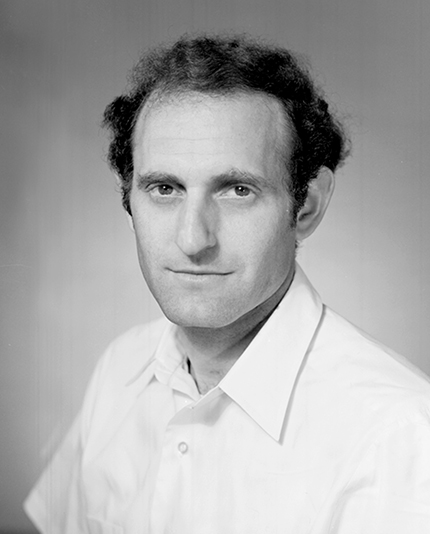Sheldon Schultz
DOI: 10.1063/PT.3.3772
Sheldon “Shelly” Schultz, a professor in the physics department at the University of California, San Diego (UCSD), who received worldwide recognition for his contributions to the discovery of metamaterials, passed away at home on 31 January 2017 from complications due to Parkinson’s disease.

Sheldon Schultz
SPECIAL COLLECTIONS AND ARCHIVES, UC SAN DIEGO

Born in New York City on 21 January 1933, Shelly received his undergraduate degree in mechanical engineering in 1954 from Stevens Institute of Technology. He earned his PhD in physics in 1960 from Columbia University, where he worked under the supervision of Nobel laureate Polykarp Kusch. That year he joined UCSD as a founding member of the physics department. He was part of the UCSD faculty until 2016, and he served as the director of the university’s Center for Magnetic Recording Research (CMRR) from 1990 to 2000. In addition, Shelly cofounded and was president of Seashell Technology LLC, which has made several important contributions to nanotechnology, nanomaterials, and functional coatings.
Shelly received many academic honors and awards, including an Alfred P. Sloan Research Fellowship in 1964. In 2003 CMRR endowed a graduate student annual prize named in Shelly’s honor. His codiscovery of metamaterials was hailed by Science as one of the top 10 breakthroughs of 2003. In 2009 Thomson Reuters added Shelly to its list of potential future recipients of the Nobel Prize in Physics for the revolutionary discovery.
With his team at UCSD, Shelly in 2000 first reported the discovery of a “left-handed” or negative-refractive-index material, with which the researchers created a new class of artificially structured materials known as metamaterials. That breakthrough and the lab’s first experimental demonstration of negative refraction led to an explosion of interest in the physics and application of metamaterials. The two papers detailing those foundational experiments are pillars of the metamaterials field. They initially generated considerable skepticism and controversy in the physics community, which prompted Shelly to become one of the staunchest and most eloquent defenders of the field. His dedicated efforts greatly publicized the discovery and contributed to the eventual widespread acceptance of negative refraction and metamaterials. The first publication was selected as one of only four PRL Milestones in 2000 by Physical Review Letters, and both papers have been cited thousands of times.
Shelly’s research interests were broad. His most salient contributions include designing, fabricating, and range-testing highly efficient subwavelength antennas operating at 1–2 GHz; using plasmon resonant particles (PRPs) as optical transducers for biochemical and clinical medical applications; and developing PRP-based Kerr scanning near-field optical microscopy. Additionally, he used magnetic field–modulated microwave spectroscopy for sensitive detection of high-temperature superconductivity; applied conduction electron spin resonance (CESR) to probe the nature of dilute local moments, spin glasses, and superconductors; and measured Landau Fermi-liquid parameters by transmission electron spin resonance, a variant of CESR of which Shelly was particularly fond.
Shelly was an animated and inspirational lecturer, no doubt due to his lifelong penchant for showmanship (of the best kind) and his flair for the dramatic. He especially enjoyed the excitement and drama of science; he infused his lectures and talks with puzzles and demonstrations that would quickly grab the attention of his audience. Hundreds of UCSD undergraduates had the remarkable fortune of taking Shelly’s freshman physics course, which showed off his delight in experimental demonstrations and his not-so-well-hidden joy in revealing the beauty of physics to young minds.
Especially noteworthy was the way Shelly celebrated the PhD defenses of his students. He and his wife, Carol, would hold PhD party “roasts” at their home, complete with a mock ceremony and a “final exam” in which the PhD student had to solve several of Shelly’s physics-related brain teasers in order to “pass.” A few students even managed to turn the tables on Shelly and effectively roast him in return.
During his long academic career, Shelly supervised and mentored numerous doctoral students and postdoctoral scholars. He cared deeply about the members of his research group, and his enthusiasm, leadership, and high standards brought out the best in them. He taught his doctoral students how to think physically and estimate on the spot. Within reason, they were expected to learn how to conceive, design, build, and repair experimental apparatus. Many of his PhD students have gone on to exceptional careers in research and teaching.
Shelly Schultz was an extraordinary individual, a superb scientist, and a loyal and reliable friend. He had a warm personality, a keen sense of humor, and seemingly boundless energy. He will be greatly missed.
More about the Authors
M. Brian Maple. University of California, San Diego.
David C. Vier. University of California, San Diego.
David R. Smith. Duke University, Durham, North Carolina.
Donald M. Eigler. Wetnose Institute for Advanced Pelagic Studies.
